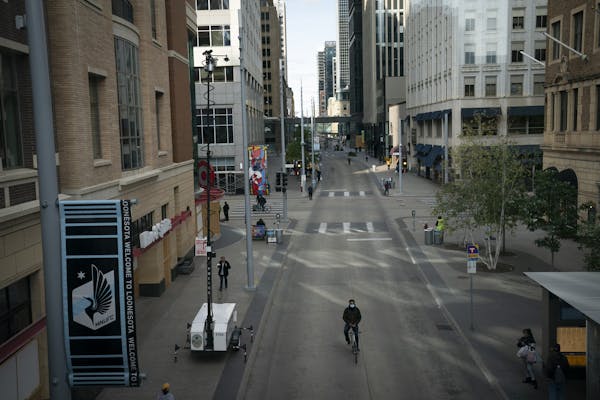More than 200,000 of Minnesota's lowest-paid workers are getting a raise shy of 1% Friday, when the state raises the minimum hourly wage to account for inflation.
Large employers through much of Minnesota will be required to pay at least $10.08 per hour, an increase of 8 cents an hour. For a full-time employee making minimum wage, the increase amounts to about $166 a year, to $20,966 annually.
For smaller employers, those with annual gross revenue below $500,000, minimum employee pay must rise starting by 6 cents to $8.21 an hour, according to state Department of Labor and Industry.
The new pay rate for workers under 18 and the training wage for employees under 20 who have been on the job for fewer than 90 days also will be $8.21 per hour.
For a full-time worker at a large company earning minimum wage, annual earnings are about equal to the federal poverty threshold for a three-person household.
Minnesota Department of Labor and Industry Temporary Commissioner Roslyn Robertson said that the increase is less than the statewide increase in overall wages, meaning minimum wage has fallen relative to other wages even with the increase.
"The increase is only intended to keep workers even with inflation, not to boost their purchasing power," Robertson said via e-mail.
These new pay floors do not apply to the state's largest pools of employees, those located in Minneapolis and St. Paul. Those two cities approved ordinances to raise the minimum wage to $15 under different timelines depending on employer size. All Minneapolis employers must pay $15 an hour by 2024, and all St. Paul employers must hit that mark by 2028.
In Minneapolis, employers with 100 or fewer employees are required to pay workers $11.75, with a raise coming July 1 to $12.50. For employers with more than 100 workers, the current rate of $13.25 climbs to $14.25 on that date.
In St. Paul, employers with five or fewer employees must pay workers at least $9.25 per hour, with a jump to $10 on July 1. For businesses with six to 99 employees, the minimum goes from $10 to $11 on July 1, and those with 100 to 9,999 workers will see the $11.50 rate move to $12.50.
State labor federation AFL-CIO Secretary-Treasurer Brad Lehto said the statewide increase is not much but that unions and other organizations are proud of their effort to get the increase scale passed in 2014.
"We worked hard to get that because it's almost impossible to get a minimum-wage increase," Lehto said.
However, the extra $166 a full-time worker will earn is unlikely to help cover a bill, said Lehto.
"The truth is $10.08 is not enough to pay working families' basic needs," Lehto said.
Looking ahead, Lehto hopes to see higher minimum wages for workers, federally and statewide.
Outside of Minneapolis and St. Paul, there were slightly more than 200,000 jobs (about 1 out of every 12) that paid the minimum wage as of February 2020, according to the Department of Labor and Industry.
The federal minimum wage requirement is $7.25 and has not risen since 2009. For Minnesota's neighbors, current minimum wage levels in North Dakota, Iowa and Wisconsin align with the federal hourly rate, while South Dakota's stands at $9.30.
Paul Walsh • 612-673-4482
Zoë Jackson • 612-673-7112
How Rita Moreno uses honors like an upcoming public television award to further her philanthropy
Germany recalls its ambassador in Russia for a week in protest over a hacker attack
Money isn't enough to smooth the path for Republican candidates hoping to retake the Senate

